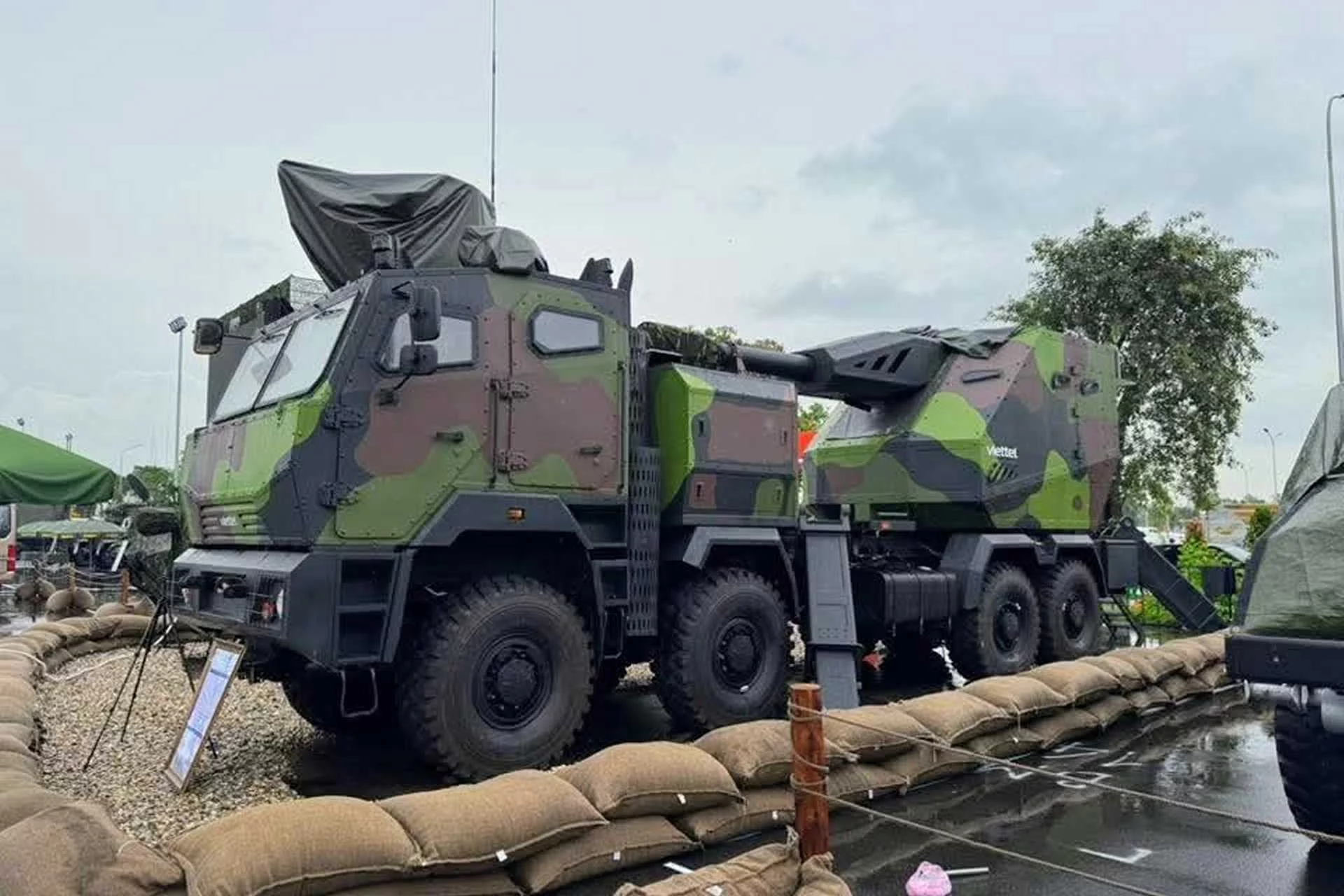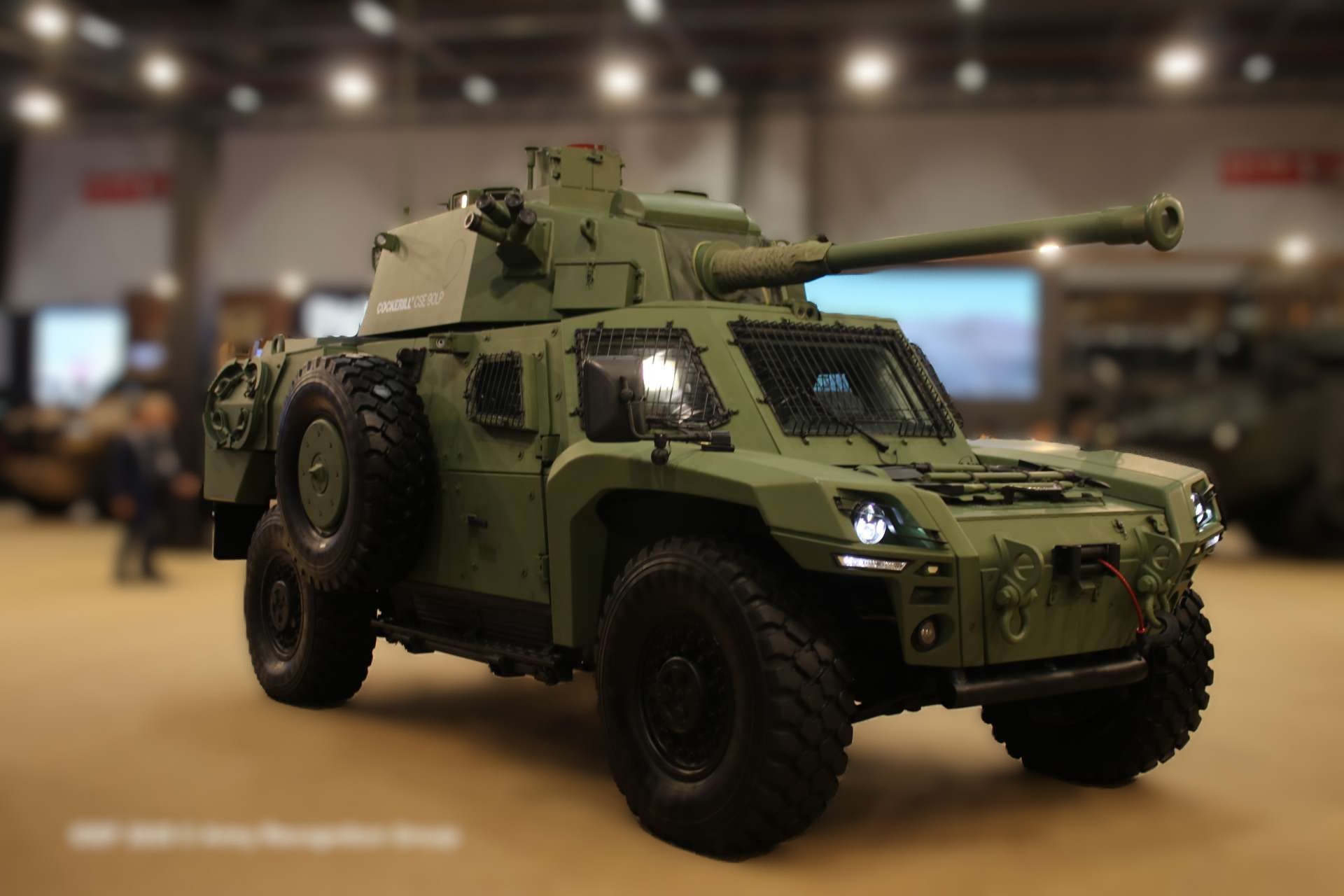In a bold step toward modernizing its military capabilities, Vietnam has unveiled the PTH-152, a domestically developed 152 mm self-propelled howitzer that marks a significant leap in the nation’s artillery prowess. This advanced system, showcased on August 25, 2025, at the Hanoi International Exhibition Center, underscores Vietnam’s commitment to enhancing its defense infrastructure amid regional security challenges. Developed by Viettel, a state-owned defense corporation, the PTH-152 is a testament to Vietnam’s growing expertise in adapting legacy systems for modern warfare. This article explores the technical specifications, strategic implications, and broader context of Vietnam’s artillery modernization efforts, shedding light on how the PTH-152 fits into the nation’s defense strategy.
A New Era for Vietnamese Artillery
Vietnam’s military has long relied on Soviet-era artillery systems, such as the 152 mm D-20 howitzer, which, while powerful, lacks the mobility and survivability required for modern combat scenarios. The PTH-152 addresses these shortcomings by transforming the towed D-20 into a self-propelled system mounted on a robust Russian KamAZ-6560 four-axle truck chassis. This wheeled platform, equipped with an armored cab of original Vietnamese design, enhances the howitzer’s maneuverability, allowing rapid deployment and repositioning on the battlefield. The system’s rotating gun mount further improves its operational flexibility, enabling it to engage targets with precision while minimizing exposure to counter-battery fire.
The PTH-152 is not Vietnam’s first foray into self-propelled artillery. Viettel has previously developed the PTH-105, based on the U.S. M101 105 mm howitzer, and the PTH-130, derived from the Soviet M-46 130 mm gun. These projects reflect Vietnam’s strategy of modernizing existing towed artillery by mounting them on mobile platforms, a cost-effective approach that leverages the country’s existing arsenal while incorporating modern engineering. The PTH-152, however, represents a step forward, as it adapts the heavier 152 mm D-20, a system known for its long-range firepower and reliability.
Technical Specifications of the PTH-152
The PTH-152 retains the ballistic characteristics of the towed D-20, offering a maximum firing range of 17 kilometers with standard rounds and up to 24 kilometers with rocket-assisted projectiles. Its 152 mm barrel, recognizable by its distinctive design, delivers formidable firepower capable of engaging a variety of targets, from fortifications to troop concentrations. The system’s turret, visible in photographs shared by Vietnamese blogger Lee Ann Quann, appears to lack advanced automation, suggesting that it requires a gunner and loader for operation. This design choice prioritizes simplicity and cost-efficiency, aligning with Vietnam’s goal of producing affordable yet effective military hardware.
Mounted on the KamAZ-6560 chassis, the PTH-152 benefits from enhanced mobility compared to its towed predecessor. The four-axle truck provides a stable platform for rapid movement across diverse terrains, a critical advantage in avoiding enemy counterattacks. The armored cab offers protection for the crew, improving survivability in hostile environments. While the system may not incorporate cutting-edge technologies like automated fire control systems, its design reflects a pragmatic approach to modernization, balancing performance with affordability.
Strategic Context and Regional Implications
Vietnam’s development of the PTH-152 comes at a time of heightened regional tensions, particularly in the South China Sea, where disputes with China over maritime boundaries have underscored the need for a robust defense posture. The establishment of the Artillery and Missile Command on August 20, 2025, as announced by Vietnam’s Ministry of Defense, signals a strategic shift toward integrating advanced artillery systems into a cohesive military framework. Led by General Nguyen Tan Cuong, this new command aims to enhance Vietnam’s ability to project power and deter potential threats.
The PTH-152 complements Vietnam’s broader artillery modernization efforts, which include the acquisition of 20 South Korean K9 Thunder self-propelled howitzers in a $250 million deal signed in July 2025. The K9, with its 50 km range and advanced fire control systems, represents a high-end addition to Vietnam’s arsenal, contrasting with the more cost-effective PTH-152. Together, these systems enable Vietnam to field a mix of modern and upgraded artillery, enhancing both its defensive and offensive capabilities. The K9’s tracked design offers superior mobility in rugged terrain, while the wheeled PTH-152 excels in rapid deployment across roads and open landscapes.
Vietnam’s artillery inventory, as detailed in The Military Balance 2025, remains diverse, encompassing Soviet-era systems like the 76 mm ZiS-3, 100 mm BS-3, and 122 mm D-30, alongside American M101 105 mm howitzers and Chinese Type 66 152 mm guns. While some of these systems are being phased out, the integration of self-propelled platforms like the PTH-152 and K9 Thunder reflects a deliberate effort to transition from static, towed artillery to mobile, responsive systems capable of meeting the demands of modern warfare.
Historical Context: Vietnam’s Artillery Evolution
Vietnam’s pursuit of self-propelled artillery is not new. As early as the 1980s, Vietnamese engineers experimented with mounting the D-20 on GAZ-63 truck chassis, though these efforts were limited by technological constraints and did not result in large-scale deployment. More recent projects, such as the PTH-105 and PTH-130, have built on this experience, leveraging technology transfers and domestic innovation to create viable self-propelled systems. The PTH-152 draws inspiration from similar efforts, such as Cuba’s Jupiter series, which mounts Soviet artillery on KrAZ truck chassis, highlighting Vietnam’s ability to adapt foreign designs to local needs.
The development of the PTH-152 by Viettel, a conglomerate with a growing reputation in Vietnam’s defense industry, underscores the country’s increasing self-reliance in military production. Viettel’s modernization of the S-125-VT air defense system, showcased at the Vietnam International Defense Exhibition in 2024, demonstrates its broader contributions to Vietnam’s defense capabilities. By producing systems like the PTH-152, Viettel is helping to reduce Vietnam’s dependence on foreign suppliers while fostering a domestic defense industry capable of addressing national security needs.
Challenges and Future Prospects
Despite its advancements, the PTH-152 faces challenges that could impact its effectiveness. The lack of automation in the turret, as suggested by visible windows, may limit its rate of fire and operational efficiency compared to modern systems like the K9 Thunder or China’s SH-16A, which incorporate advanced fire control and laser ignition systems. Additionally, Vietnam’s reliance on legacy Soviet-era artillery designs, while cost-effective, may constrain the PTH-152’s ability to compete with cutting-edge platforms in terms of precision and automation.
Looking ahead, Vietnam’s defense industry is poised for further growth. The successful development of the PTH-152 could pave the way for additional self-propelled artillery projects, potentially targeting larger calibers or incorporating advanced technologies like automated loading systems. The Military Technical Institute, which played a key role in developing the PTH-130-K225B, is likely to continue driving innovation in this space. Moreover, Vietnam’s collaboration with international partners, such as South Korea, could facilitate technology transfers that enhance the capabilities of future systems.
Global Comparisons and Competitive Landscape
The PTH-152 enters a competitive global market for self-propelled artillery, where systems like the South Korean K9 Thunder, Swedish Archer, and Chinese SH-16A set high standards for mobility, firepower, and automation. The K9, with its 155 mm/52 caliber gun and 50 km range, offers superior performance but comes at a higher cost, making the PTH-152 an attractive option for nations seeking affordable modernization. The Swedish Archer, used effectively in Ukraine, emphasizes rapid deployment and automation, while China’s SH-16A introduces innovations like laser ignition, highlighting the technological gap Vietnam must bridge to remain competitive.
Vietnam’s approach mirrors that of other nations, such as the Philippines, which has integrated Israeli ATMOS 2000 howitzers into its arsenal, and India, which has contracted for 100 K9 Vajra-T howitzers. These examples illustrate a global trend toward mobile, self-propelled artillery systems that combine firepower with rapid repositioning to counter modern threats. By developing the PTH-152, Vietnam is positioning itself as a regional player in this domain, with potential opportunities for export to countries seeking cost-effective artillery solutions.
Conclusion
The unveiling of the PTH-152 self-propelled howitzer marks a pivotal moment in Vietnam’s military modernization journey. By transforming the Soviet-era D-20 into a mobile, self-propelled system, Vietnam has demonstrated its ability to innovate within the constraints of its existing arsenal. The PTH-152, combined with acquisitions like the K9 Thunder, enhances Vietnam’s artillery capabilities, providing a flexible and survivable force capable of addressing regional security challenges. As Vietnam continues to invest in its defense industry, the PTH-152 serves as a symbol of its ambition to achieve greater self-reliance and project power in an increasingly complex geopolitical landscape. With ongoing developments in artillery and missile systems, Vietnam is well-positioned to strengthen its military capabilities and assert its role in regional defense dynamics.




